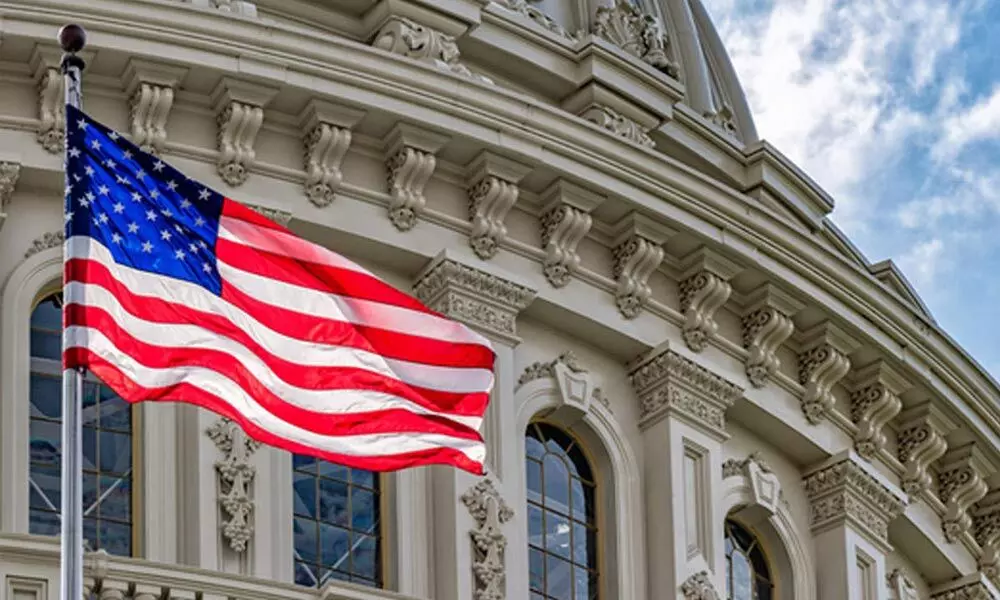Fed threads a needle that's only going to get smaller
The one development that would allow the Fed to again appease both bond and stock markets is something no one wants: a significant increase in liquidity injections in response to a new Covid wave that undermines the significant progress made on vaccinations and infection control
image for illustrative purpose

The Federal Reserve nimbly walked a tightrope on Wednesday, cheering stock and bond investors by tolerating an unusually large divergence between significant revisions to its economic forecast and almost no changes to its policy statement, all supplemented by ultra-dovish remarks by Chair Jerome Powell during his press conference. That act will only become more difficult in front of markets that are hooked on the central bank's liquidity injections unless the undesirable happens and the US, like Europe, finds its recent successes against Covid-19 challenged by new variants of the virus.
By raising its 2021 growth forecast to 6.5 per cent, the Fed joined others in substantially improving its outlook for the US economy. The forecast for the unemployment rate was reduced to 3.5 per cent. Meanwhile, the Fed moved its favored measure of inflation - the PCE - up from 1.8 per cent to 2.4 per cent, for this year, with the core measures rising more moderately to 2.2 per cent.
Despite these historically large revisions, the central bank's policy statement remained virtually unchanged. The implied message - that the Fed will be even more ready to support an economy running ever hotter - was more than confirmed by Powell's ultra-dovish comments at his press conference.
Powell made it crystal clear that, despite a few officials indicating an earlier interest rate increase in their individual 'dot plots,' the Fed has no intention of contemplating a change in the ultra-accommodating policy mix of near-zero interest rates, large asset purchases ($120 billion a month) and incredibly loose forward guidance. He stressed that the central bank "will not act preemptively based on forecasts." He also went out of his way to counter any and all concerns about monetary policy contributing to financial market excesses that risk systemic financial instability that could spill back adversely into the economy down the road.
With technical bond market positions dominated by shorts, and with the overhang of further Fed interventions, yields did not react in the traditional fashion to the Fed's insistence not only on hard evidence of higher inflation but also proof that it's not transitory. Instead, the yield on 10-year Treasuries was lower by the end of the press conference than it had been earlier in the day. With that, the unusual correlation between these "risk free" securities and the higher-volatility Nasdaq continued, with the tech-heavy index rising notably during the press conference, also erasing its earlier underperformance relative to the Dow Jones Industrial Average.
The Fed delivered something that many, including me, deemed difficult: acknowledging the substantial economic improvement, maintaining current policy and not disturbing markets. Its ability to repeat such an outcome is likely to be harder in the next few months as it is forced to revise its growth rate even higher, the short base regroups and supply bottlenecks multiply. In the process, it will face a difficult trade-off among:
Trying to calm the yield concerns by signaling more purchases of securities, thereby risking yet another leg up in inflationary expectations;
Doing nothing on forward policy guidance because yields are rising for the right economic reasons and the pickup in inflation will just be transitory, thereby risking a tantrum from a market conditioned to expect repeated policy reassurances in response to higher in volatility; or
Signaling the potential start of a monetary policy taper given that significant fiscal expansion is in the pipeline to turbocharge a continuing recovery and substantial pent-up private demand exists, thereby risking disorder from markets always keen on ample and predictable Fed liquidity injections.
The one development that would allow the Fed to again appease both bond and stock markets is something no one wants: a significant increase in liquidity injections in response to a new Covid wave that undermines the significant progress made on vaccinations and infection control. (Bloomberg)

